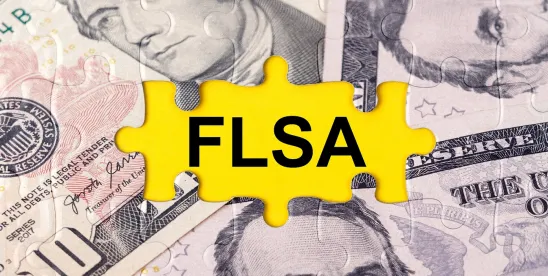The U.S. Supreme Court heard oral arguments on Tuesday, November 5, on the standard of proof that employers must meet to show an employee is exempt from the minimum wage and overtime requirements of the Fair Labor Standards Act (FLSA).
There are two competing choices: preponderance of the evidence or “clear and convincing” evidence. Every circuit court to address the issue, except the Fourth Circuit, has held a preponderance of the evidence standard applies. The Supreme Court appeared ready to agree, and reverse the Fourth Circuit’s decision imposing a higher standard.
Fourth Circuit Case
The case before the Court is E.M.D. Sales, Inc. v. Carrera, a suit filed by sales reps for a food distribution company who claim they were not paid for overtime hours worked. The employer argued that the employees were not entitled to overtime because the FLSA’s “outside sales” exemption applied. A federal court in Maryland rejected this affirmative defense, finding the employer could not meet its burden to show that the exemption applied — an exemption the employer was required to prove applied by “clear and convincing” evidence, as established by Fourth Circuit authority.
The U.S. Court of Appeals for the Fourth Circuit affirmed the court’s decision, and doubled down on requiring employers to establish an exemption applies by “clear and convincing” evidence. (The Fourth Circuit covers federal courts in Maryland, North Carolina, South Carolina, Virginia, and West Virginia.)
Is the FLSA Special?
Preponderance of the evidence is the default standard of proof in civil cases, and “[n]othing in the text suggests that Congress intended a clear and convincing evidence standard to apply to the 34 exemptions under the … Fair Labor Standards Act,” said Lisa Blatt, arguing for petitioner E.M.D. Sales, Inc.
The federal government appeared as amicus in support of the petitioner, urging the Court to adopt the preponderance of the evidence standard. Aimee W. Brown, Assistant to the Solicitor General, noted that the policies promoted by the FLSA are materially similar to workplace protections like those in Title VII and the standard of proof is a preponderance of the evidence.
“So why should FLSA be treated more advantageously than the discrimination cases?,” asked Justice Clarence Thomas.
Lauren E. Bateman, arguing on behalf of the respondent employees, argued that the preponderance of the evidence standard is insufficient to satisfy the remedial purposes of the FLSA “because it allocates the risk of factual error equally between employers and workers.” She contended that “employers are likely to possess and control evidence relevant to these kinds of factual determinations. And employers can and sometimes do manipulate evidence in their favor, such as job descriptions or titles.” Bateman also argued the FLSA is unique among workplace statutes, as reflected, for one, by the FLSA’s collective action mechanism.
The Justices had relatively few questions of the petitioner. Several mentioned other contexts in which, like the FLSA, important rights are at stake but are resolved under the standard burden of proof. They appeared doubtful that the FLSA would stand apart.
Potential Impact
The eventual decision in this case will have important implications for employers. The Fourth Circuit’s higher evidentiary burden makes it more likely that a factfinder will conclude an employee does not meet the asserted exemption — in this case, the outside sales exemption, but the reasoning applies to any of the FLSA’s exemptions, increasing the risk of liability under the FLSA. Currently, establishing an exemption is more difficult in some locations than in others. By resolving the circuit conflict, the decision will ensure that employers will face a uniform national standard.




 />i
/>i

